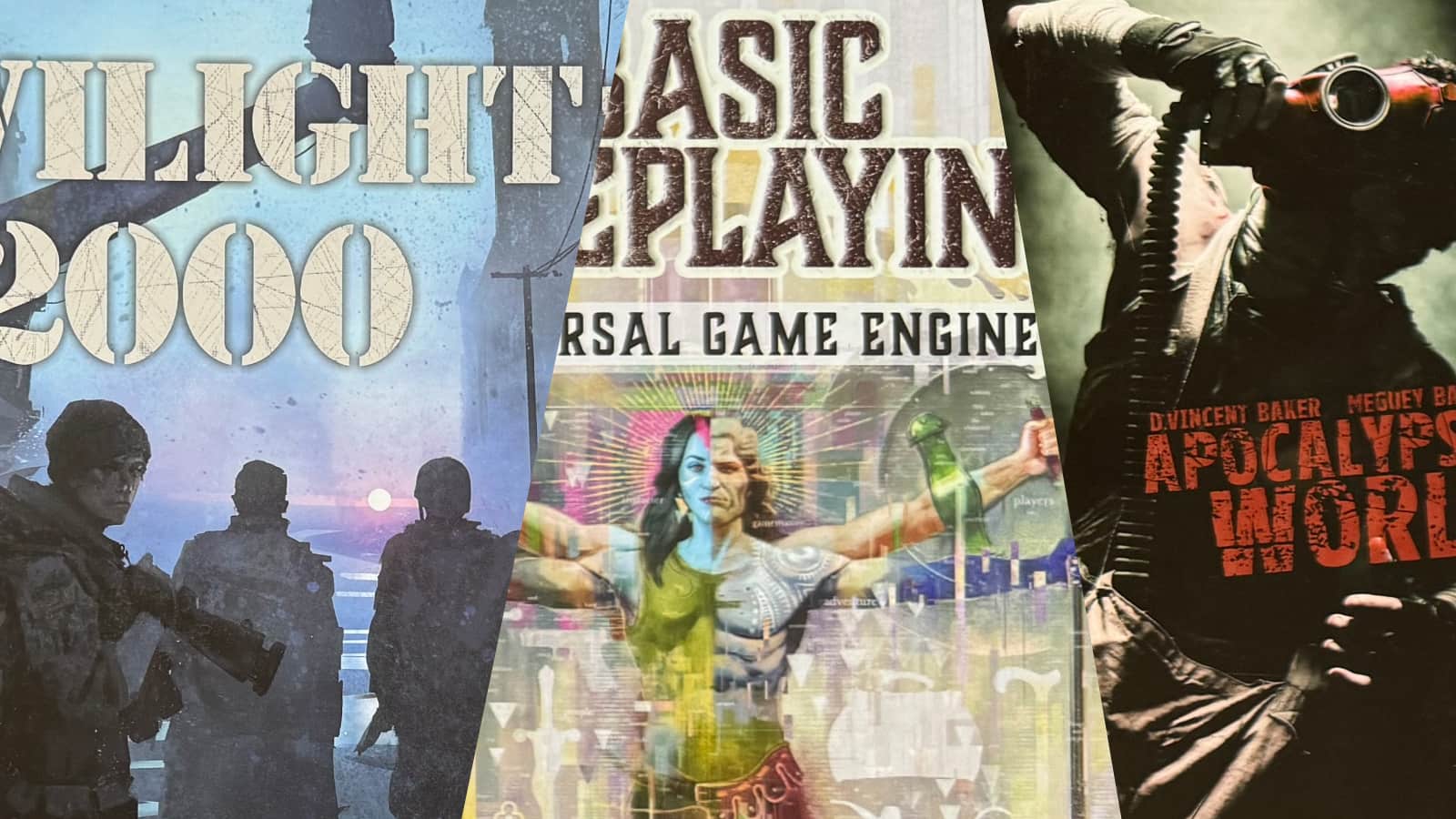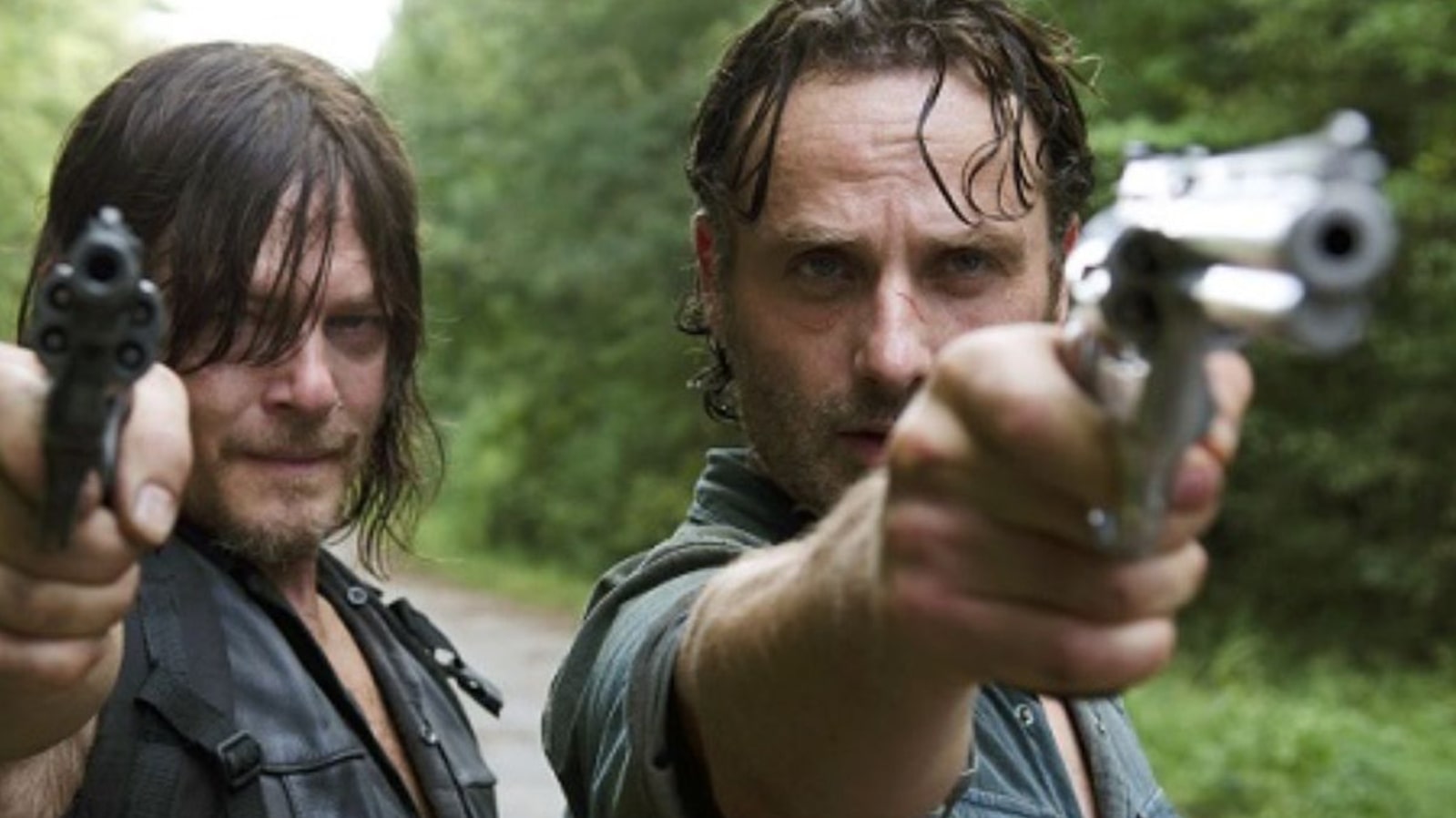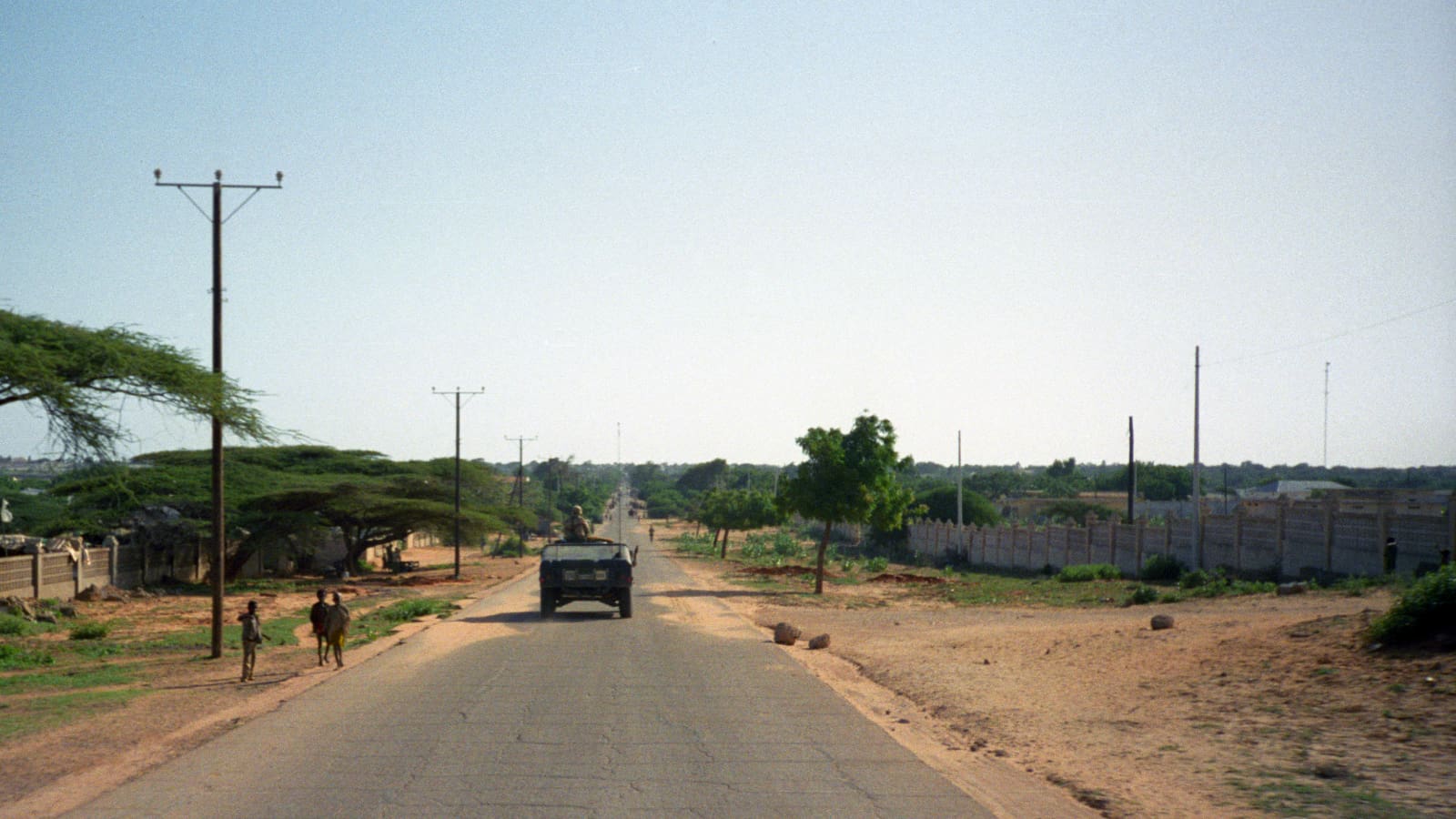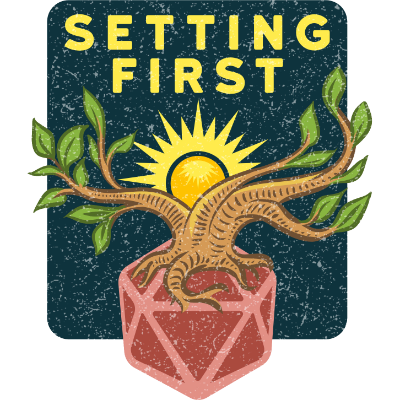
Before you build out plans for your post-apocalyptic campaign, think about what you want from it.
This appeared originally as a YouTube video, but in an effort to be evenhanded, I’m providing the transcript here, so you can either read the post below or watch it in video form.
This post is about what’s on my mind when I’m planning a Setting First post-apocalypse campaign that attempts to balance verisimilitude with action, and is designed for long-term play.
Post-Apocalypse is My Jam
I’ve been into post-apocalypse RPGs for a long time. From the full gonzo of Gamma World, giant mutant jack rabbits and all, I moved to Aftermath, a game that put the crunch in crunchy. I ran two lengthy Aftermath campaigns set in the grim ruin of my hometown a generation after civilization was wiped out by nuclear war. This was the ‘80s, and fear of nuclear war was very real. No wonder I ran a Twilight 2000 campaign in college. Years later, I came back with a new apocalypse: a multigenerational “zombies take over the world” campaign using Basic Roleplaying.
After a while, I gave Apocalypse World a try, running two different brief campaigns. I returned to Twilight 2000 eventually. We tried Twilight 2013 and Twilight 2000 2ed, before shifting to Nemesis at the end of the campaign. Later still, I fired up Mutant: Year Zero and ran a campaign set three generations after the conclusion of that Nemesis campaign.
Getting Past Genre Tropes
Through all of that, I learned a few things about what works for me and my group. These insights have informed a great deal of what I think of as the Setting Firsts approach. I don’t build campaigns as a paint-by-numbers affair, and this is just me explaining how I’ve come to think about post-apocalypse campaigns, so your mileage may vary. Hopefully some of it will trigger ideas as you think about playing in or running a post-apocalypse campaign.
These ideas are mainly for campaigns set either during or within two or three generations after an apocalypse, one that occurred in our own time or in the near future. That said, some of these thoughts may be useful in planning other kinds of post-apocalypse campaigns as well.
While there are plenty of flavors of post-apocalypse fiction, most of the common genre tropes come from movies and TV shows. The wasteland-dwelling, football pad-wearing, spiked baseball bat-wielding, leather-and-rag-clad characters we’ve all seen dozens of times inform our understanding of the apocalypse. And many of these tropes derive primarily from aesthetic choices rather than attempts at believability.
So when building the foundation of a setting, I find it useful to augment the rulebooks and genre fiction with non-fiction sources of inspiration. And non-fiction can be surprisingly inspiring. Whether I’m planning a zombie apocalypse, a Boer War run amok, or a traditional World War III campaign, two books in particular have really informed how I think about post-apocalypse settings.

The first, The World Without Us, explores what our world would look like if suddenly all the humans were eliminated. How would cities decompose over time? What would happen to bridges and skyscrapers? How would floods and fires change the landscape with surprising speed? What would happen to flora and fauna?
The Knowledge: How to Rebuild Civilization in the Aftermath of a Cataclysm is a cleverly constructed book. It uses a hypothetical scenario in which humanity’s survivors have to rebuild after an apocalypse, as a way to demonstrate the power of the scientific method. Along the way, it covers everything from where survivors would congregate to how the raw materials in the ruins would be used to recreate foundational technologies, and why the road back to civilization might take a different course than we’d expect.
A third book, Raven Rock: The Story of the U.S. Government’s Secret Plan to Save Itself While the Rest of Us Die is particularly helpful for any campaign in which vault dwellers make an appearance. It’s also a well-researched, eye-opening read in its own right. I’ve linked to reviews of all three of these books in the notes for this video.
Choosing Themes and Tone
In my experience, it pays to be really clear about themes and tone up front. Before we start the campaign, I want to talk through the types of threats player characters might face, the overall lethality of the campaign, and the themes being explored.
Is this going to be about the challenges of pulling a small survivor community together? Will it be about trying to defend an area from rootless raiders who have succumbed to their worst instincts? Is it about trying to hold on to the last vestiges of the old world, or deliberately trying to create something new and better? Or is it about pursuing old vendettas and gaining power?
Is this going to be relentlessly dark, or infused with hope? Is the tone paranoid and fearful or determined and optimistic? Will this be a shoot-first-and-ask-questions-later pulp action campaign, or one in which tension is ratcheted up slowly? Whatever themes and tone I’m aiming for, everyone at the table needs to buy into the approach.
The Matter of Systems
System preferences are often a matter of familiarity and comfort as much as achieving a hypothetical perfect fit, so broad recommendations for post-apocalypse game systems are likely to be next to useless. That said, when I’m framing up a campaign, I think primarily in terms of how a system supports or impedes the themes and tone I’m after.
For example, if interpersonal conflict is something I really want to emphasize, Apocalypse World might be a good choice. If the player characters will be working their way through the wreckage of the tail end of a massive war and fighting off raiders, Twilight 2000 could provide the right scaffolding. If the PCs are trying to build a small community focused on creating a better future, a toolkit system like Basic Roleplaying may be a good fit.
But I’d be wary of a d20 classes-and-level system in which a high-level character can wipe the floor with lower-level NPCs, because that yanks us right out of gritty survival and takes us into the realm of heroic fantasy.
Let’s dig a bit deeper into a few specific areas that inform a Setting First approach to building out a post-apocalypse. Some of these ideas come from the books I mentioned earlier, some are from reading a lot of history books, and some are from lived experience.
Less Violence is More
Death is everywhere in a post-apocalypse setting. It’s in the rotting carcasses being pecked at by overfed ravens. It’s in the jagged metal remains of skyscrapers and the lifeless, radiated zones, of which there could be many even in a non-nuclear apocalypse. Given an absence of highly-specialized technicians to maintain nuclear power plants, there’s no quaint little Shire anywhere. There are no bustling orbital cities full of glittering chrome. There are just desperate survivors trying to find safety and hope in the shadow of a massive cataclysm.

Post-apocalypse tropes would have us believe that in the midst of all that death, survivors would be spending most of their energy figuring out how to kill other humans. But to my mind, they actually need to spend most of that energy on the rudiments of survival. The people left after an apocalypse are there because of dumb luck—but also because of smarts and the ability to get out of danger rather than increase it.
Even if I’m going for a high-action campaign, ever-present violence is just too much. Less is more, because it ratchets up the tension and creates more drama. And when combat occurs, I want it to be as war, not as sport. Death is everywhere. Death is real. Combat should be scary and unpredictable. And when the combat is ended and the survivors are licking their wounds, I want healing to be difficult and time-consuming. Even if the game system doesn’t explicitly handle it this way, healing should never be a foregone conclusion. PCs should feel nervous and vulnerable while healing. Even more than deadly combat mechanics, this heightens dramatic tension and hammers home to players that playing it fast and loose with combat will have serious consequences.
Communities are Central
For most of us, it’s next to impossible to imagine just how difficult it would be to survive with the infrastructure of 21st-century life wiped away. Sure, for a while survivors would be able to get by on the last remnants of that dead reality. But eventually, the easy pickings would disappear. Unless the level of physical devastation wrought during the apocalypse was relatively minimal, survivors would likely form settlements outside the cities rather than in them.
Over time, these cities would become quite dangerous. Vegetation would eventually push through concrete, and seeds would take purchase in the layers of dust and dirt inside even the tallest building, serving as kindling for unchecked fires. Wild dogs, wolves, and mountain lions could reclaim the streets, preying on resident populations of deer and other game that first find the parks then fan out from there.
Decayed and destroyed buildings would be unstable and dangerous to explore. But survivors, gathered in a relatively safe area outside a city, probably situated next to whatever river flows into the city, would send expeditions in to gather raw materials for construction and fortification: lengths of electrical wire, batteries, machine parts, vehicles, pharmaceuticals, and so on.
They’d grow food. But how? Would they go back to basic small farms, or would they have the capability to create sophisticated hydroponic greenhouses? How would farms be tended and guarded? Would it be distributed among the community? Would excess be traded with outsiders? If so, how? What species of plants and animals would be thriving, and which would be struggling?
The nature of the apocalypse matters a great deal here, as anything that directly affects the water, soil, and atmosphere—such as a nuclear winter—could radically affect everything from ground vegetation to game animals and apex predators. Water is especially important, because access to potable water would be key. But also because waterways have, since the beginning of human civilization, served as conduits for exploration and trade, as well as sources of food. Cities didn’t show up next to big rivers and at the seats of natural harbors for no reason.
When you always have to think about food, water, and shelter before anything else, that changes everything. It affects how people congregate (or don’t), how they govern themselves (because anytime you have more than one person, this becomes a thing, whether formal or not), what is important to them, everything. The need to constantly scramble for survival also creates constant adventure.
Survivors don’t go out in search of treasure and dragons to slay because they want fame and fortune. They go out in search of food and potable water because if they don’t, they’ll starve to death. So every little cache of baked beans, every captured feral hog, every portable water filter is a minor victory. And the tension of being close to the edge keeps player characters from becoming complacent.
Information is King
Whatever the apocalypse, it likely has destroyed most of the systems for gathering, vetting, and disseminating information that we take for granted today. This makes information much, much more valuable. After the apocalypse, suddenly a world drowning in information becomes an information desert. Those who have accurate information about what’s going on hoard it, only sharing it with those they truly trust. And those who don’t have it are constantly seeking it out.

I got a sliver of a taste of this in 1993 as a soldier deployed to Somalia. In our area of operations, the locals had no central government, no functioning institutions, and few reliable information sources. It wasn’t an apocalypse, but the foundations of civil society and commerce had been decimated. Rumors spread like wildfire, sometimes sending fearful survivors of civil war and famine into panic.
It was understandable. When things look dicey, it’s best to flee first and ask questions later. And flee they did, sometimes in large numbers. In order to convince people that rival clans weren’t moving into their territory, on a couple of occasions we had to take the village elders up in a Blackhawk helicopter so they could see with their own eyes that no attack was coming. We did this to assuage people’s fears, but also to reinforce the standing of the elders in their own communities.
They got to gather valuable information firsthand. And because they were the source of that information, their position as leaders was reinforced. Also, after we helped the elders see with their own eyes, eventually they came to trust our word when we told them nobody was coming to attack them. That trust helped us immensely in negotiating with them on other matters.
These are just a few of the factors I think about when working up a post-apocalypse campaign. As always, I welcome your comments in the Setting First Discord.
Ω

